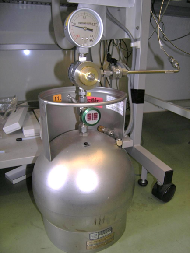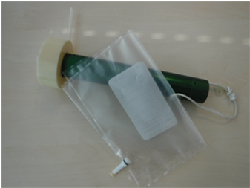- Yokohama-shi Top Page
- Living and Procedures
- Community Development and Environment
- Environmental Conservation
- Environmental Conservation Initiatives
- About off-flavors that have occurred in the city since October 2020
Here's the text.
About off-flavors that have occurred in the city since October 2020
We publish the latest information about off-flavors that have occurred in the city since October 2020.
Last Updated February 7, 2024
1.Outbreak of bad odor in the city
| Date and time of occurrence | Location | Overview | Results of analysis of samples collected |
|---|---|---|---|
Thursday, October 1, 2020 | Naka Ward, Minami Ward | 10 119 calls, etc. | No sample collection |
Saturday, October 3, 2020 | Naka Ward, Kohoku Ward | 25 119 calls, etc. | No sample collection |
Monday, October 12, 2020 | Kanagawa Ward | 16 119 calls, etc. | Collected at Fire Bureau Main Building |
Monday, October 26, 2020 | Kanazawa Ward | Call 119 | No sample collection |
Friday, November 6, 2020 | Kanazawa Ward | 5 119 calls, etc. | No sample collection |
Thursday, March 4, 2021 | Kanazawa Ward | 6 119 calls, etc. | Collected at Kanazawa fire department |
Saturday, March 6, 2021 | Konan Ward, Isogo Ward | 6 119 calls | Collected at Konan fire department |
Thursday, March 11, 2021 | Naka Ward | Four 119 calls | Collected at Naka fire department |
Friday, April 30, 2021 | Kanagawa Ward, Nishi Ward | 18 119 calls, etc. | Collected at JR Yokohama Station |
Monday, June 28, 2021 | Kanagawa Ward, Nishi Ward | 12 119 calls, etc. | Collected at Keikyu Yokohama Station |
Monday, September 20, 2021 | Kanazawa Ward | Three 119 calls | No sample collection |
Saturday, February 12, 2022 | Naka Ward | 3 or more 119 calls | No sample collection |
Thursday, March 17, 2022 | Naka Ward, Minami Ward | 15 119 calls | No sample collection |
Thursday, March 24, 2022 | Naka Ward, Minami Ward | 15 119 calls, etc. | No sample collection |
Tuesday, May 17, 2022 | Kanazawa Ward | 13 119 calls, etc. | Collected at Kanazawa fire department |
Monday, November 7, 2022 | Kanagawa Ward, Nishi Ward | 15 119 calls, etc. | No sample collection |
Thursday, March 30, 2023 | Tsurumi Ward | Three 119 calls | No sample collection |
Tuesday, September 26, 2023 | Kanazawa Ward, Isogo Ward | 7 119 calls, etc. | No sample collection |
Wednesday, September 27, 2023 | Isogo Ward, Naka Ward, Minami Ward | 6 119 calls, etc. | No sample collection |
Monday, December 25, 2023 | Kanazawa Ward, Sakae Ward | 4 119 calls, etc. | No sample collection |
Friday, January 19, 2024 | Naka Ward, Minami Ward | 43 119 calls, etc. | Collected at Naka fire department |
Thursday, February 1, 2024 | Naka Ward, Isogo Ward, | 15 119 calls, etc. | No sample collection |
※As of February 5, 2024
※“119 Call, etc.” includes the number of cases received by the Green Environment Bureau Atmosphere and Sound Environment Division.
2.Sample collection method, analysis method, etc.
(1) Method of sampling and analysis of atmospheric samples
| Collection method | Analysis Method | |
|---|---|---|
| Non-odor specimens | Tedler bag collection | Gas chromathograph mass spectrometry and |
| (Reference) General Environment※ | Canister collection |
※Analysis at the General Environmental Air Measurement Bureau in the city (conducted from 2013 to 2017)
| Tedler bag | Canister |
|---|---|
|  |
(2) Overview of Results
① Samples collected on October 12, 2020
- In addition to isopentan, pentan, and butane, hydrocarbons with a carbon count of 4 to 8, such as 2-methyl pentan and n-hexane, contained in fuel evaporated gases such as gasoline, were detected at higher concentrations than in normal atmosphere (general environment).
- In addition, since ethylene and acetylene generated when burning objects are detected at a higher concentration than in the normal atmosphere (general environment), it is presumed that gasoline and other combustion were burned.
- Of the substances for which environmental standards have been established, "benzene" exceeded the environmental standards (annual average value is 3 μg / m3 or less), but due to a short time, it will immediately affect health. It is not considered to have an effect.
② Samples collected on March 4 and 6, 2021
- Although propane and butane were detected in non-odor samples, the results of analysis of odorless samples and the general environment conducted in the past (average of analysis conducted by the General Environment and Atmosphere Measurement Bureau from January and February 2017 to February 2017).
- For chemical substances with environmental standards, such as benzene and trichloroethylene, no concentration exceeding environmental standards was detected.
- Based on these results, it is unlikely that health will be affected immediately.
③ Samples collected on March 11, 2021
- Propanes, butanes, ethane, etc. contained in fuels such as liquefied petroleum gas (LPG) were detected at higher concentrations than odorless samples or in normal atmosphere (general environment).
- Substances such as pentan and isopentan contained in evaporated gas of fuels such as gasoline were also detected at high concentrations.
- For chemical substances with environmental standards, such as benzene and trichloroethylene, no concentration exceeding environmental standards was detected.
- Based on these results, it is unlikely that health will be affected immediately.
④ Samples collected on April 30, 2021
- Propanes and butanes contained in fuels such as liquefied petroleum gas (LPG) were detected at higher concentrations than odorless samples or in normal atmosphere (general environment).
- Substances such as pentan and isopentan contained in evaporated gas of fuels such as gasoline were also detected at high concentrations.
- For chemical substances with environmental standards, such as benzene and trichloroethylene, no concentration exceeding environmental standards was detected.
- Based on these results, it is unlikely that health will be affected immediately.
⑤Samples collected on June 28, 2021
- Propanes and butanes contained in fuels such as liquefied petroleum gas (LPG) were detected at higher concentrations than odorless samples or in normal atmosphere (general environment).
- Substances such as pentan and isopentan contained in evaporated gas of fuels such as gasoline were also detected at high concentrations.
- For chemical substances with environmental standards, such as benzene and trichloroethylene, no concentration exceeding environmental standards was detected.
- Based on these results, it is unlikely that health will be affected immediately.
⑥Samples collected on May 17, 2022
- Fluorocarbon-134a, isopentan, pentan, butane, etc. were detected at higher concentrations than odorless samples or in normal atmosphere (general environment).
- For chemical substances with environmental standards, such as benzene and trichloroethylene, no concentration exceeding environmental standards was detected.
- Based on these results, it is unlikely that health will be affected immediately.
⑦Samples collected on January 19, 2024
- Propanes, butanes, isobtans, etc. contained in fuels such as liquefied petroleum gas (LPG) were detected at higher concentrations than odorless samples or in normal atmosphere (general environment).
- Pentan contained in evaporated gas and other fuels such as gasoline was also detected at a high concentration.
- For chemical substances with environmental standards, such as benzene and trichloroethylene, no concentration exceeding environmental standards was detected.
- Based on these results, it is unlikely that health will be affected immediately.
(3) Source of offensive odors
At this time, the source is unknown.
We will continue to respond while sharing information with related organizations such as Kanagawa Prefecture.
3.Analysis results of the measurement data of the constantly monitoring station (general environmental air measurement station)
In Motoichi, based on the Air Pollution Control Law, general environmental air measurement stations (hereinafter referred to as general stations) have been set up at 18 locations in the city to constantly monitor the status of the air environment.
In order to understand the atmospheric environment at the time of reporting off-flavors, we analyzed the items related to fuel and combustion in the measurement data (preliminary figures) of the General Bureau in October 2020.
About regular monitoring data used for general stations and analysis (PDF: 356KB)
① Analysis Results on October 1, 2020 (PDF: 968KB)
② Analysis Results on October 3, 2020 (PDF: 978KB)
③ Analysis Results on October 12, 2020 (PDF: 1,092KB)
④ Analysis Results on October 26, 2020 (PDF: 949KB)
- On each reporting day, the wind direction at the general bureau near the reporting location was from the sea to land for all four days.
- In all four days when the report was received, before and after the report time, the general bureau near the report location confirmed "increase in nitrogen oxide (NOx = NO + NO2) concentration" and "decrease in photochemical oxidant (Ox) concentration". Was. In these phenomena, nitrogen monoxide (NO) generated by the burning of some substance reacts with ozone (O3), the main component of Ox in the atmosphere, producing nitrogen dioxide (NO2), and then Ox concentration decreases. It is presumed that the NO did not react and stayed in the atmosphere.
- During the three days except October 3, the concentration of non-methane hydrocarbons (non-methane, among compounds of hydrogen and carbon, non-methane, NMHC) was confirmed at a general station near the reporting location before and after the reporting time. Isopentan, pentan, butane, etc. detected in atmospheric samples collected at the Fire Bureau Main Building on October 12 are substances corresponding to NMHC.
- The source is unknown at this stage, including whether it is one or more.
4. Press release materials to date
4. Reference URL
You may need a separate PDF reader to open a PDF file.
If you do not have it, you can download it free of charge from Adobe.
![]() To download Adobe Acrobat Reader DC
To download Adobe Acrobat Reader DC
Inquiries to this page
Atmosphere and Sound Environment Division, Environmental Protection Department, Green Environment Bureau
Telephone: 045-671-2483
Telephone: 045-671-2483
Fax: 045-550-3923
Email address: mk-taiki@city.yokohama.lg.jp
Page ID: 649-843-371








